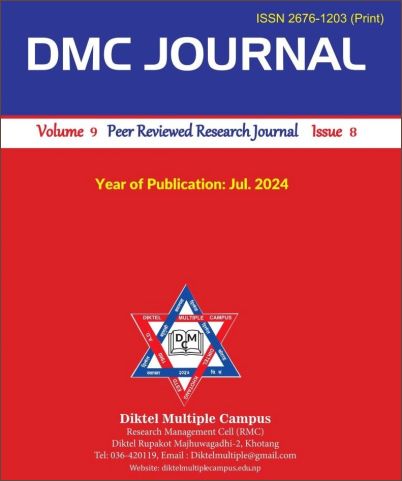Takeaways on Agriculture and Livestock Productivity: A Study of Rural Farmers
DOI:
https://doi.org/10.3126/dmcj.v9i8.74889Keywords:
Agriculture, livestock, alternative approaches, intercropping, agricultural researchAbstract
The purpose of this study was to analyze the takeaways on agricultural and livestock productivity in Khotang. The majority of households are principally engaged in agricultural and livestock activities, but major cereal crops, groceries, fruits, vegetables, seeds, seedlings, meats, fertilizers, and pesticides is massively imported from beyond the district. About 30-40 percent of cultivated lands remained fallow because of population deficit, shortage of labour, migration, and wild animal encroachments. The study is focused in Diktel Rupakot Majhuwagadhi Municipality, Khotang. The mixed methods were used to gather the primary and secondary nature of data. Systematic random sampling methods were used to select the sample size and accomplish the structured survey questionnaire in this research work. Existing agricultural and livestock policies and its’ execution is helpless to motivate rural farmers who spent their lives in the field and cattle sheds for several decades. Nearly 24 percent of the population are out of home and only senior adults, women and kids can be found in the majority of households. Women spent their significant time in the field in the absence of men at home but the available equipment used for agriculture work seems more incompatible for them. Workloads have been increased for no guaranteed possibilities are observed that the absent population will resume their farm activities upon their arrival to the village. Local Government has the full of authority to research, plan and execute the realistic agricultural and livestock policy. An identification of need-based skills, training, and compatible equipment and its’ wisefull uses for the advancement of production, processing and commercialization of agriculture is the collective voice of rural farmers.




